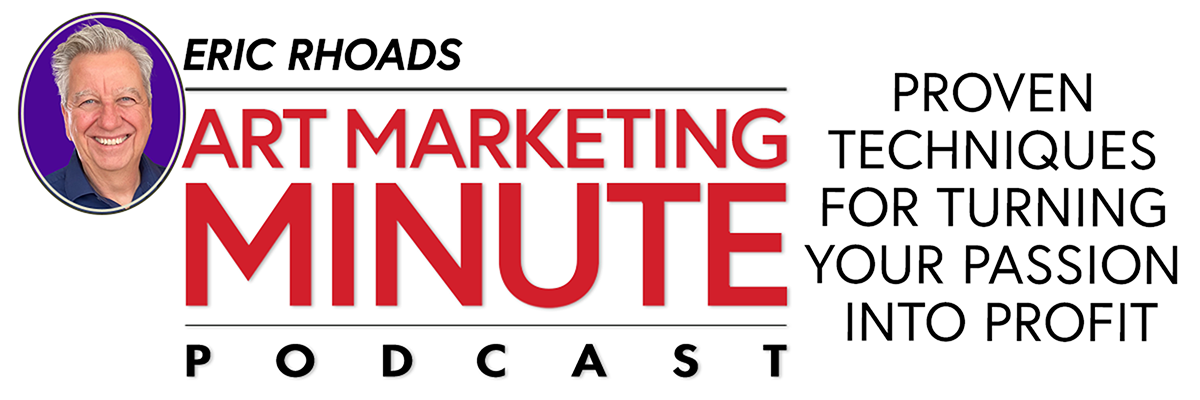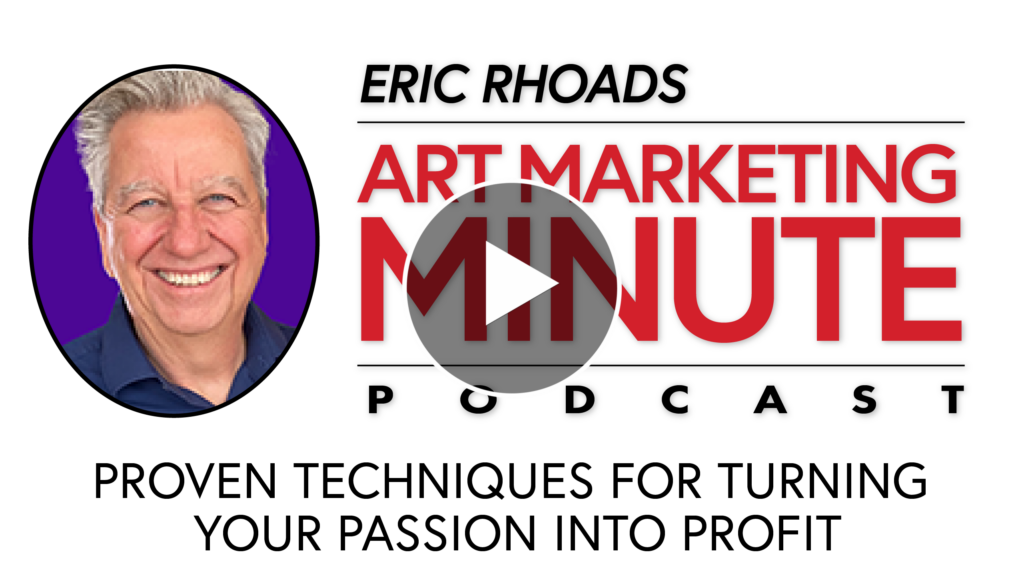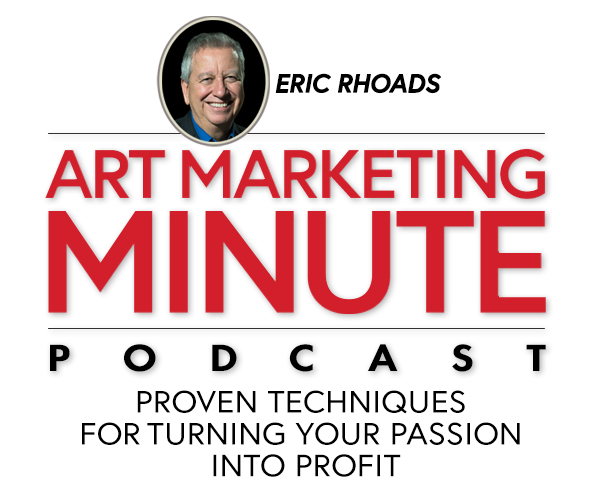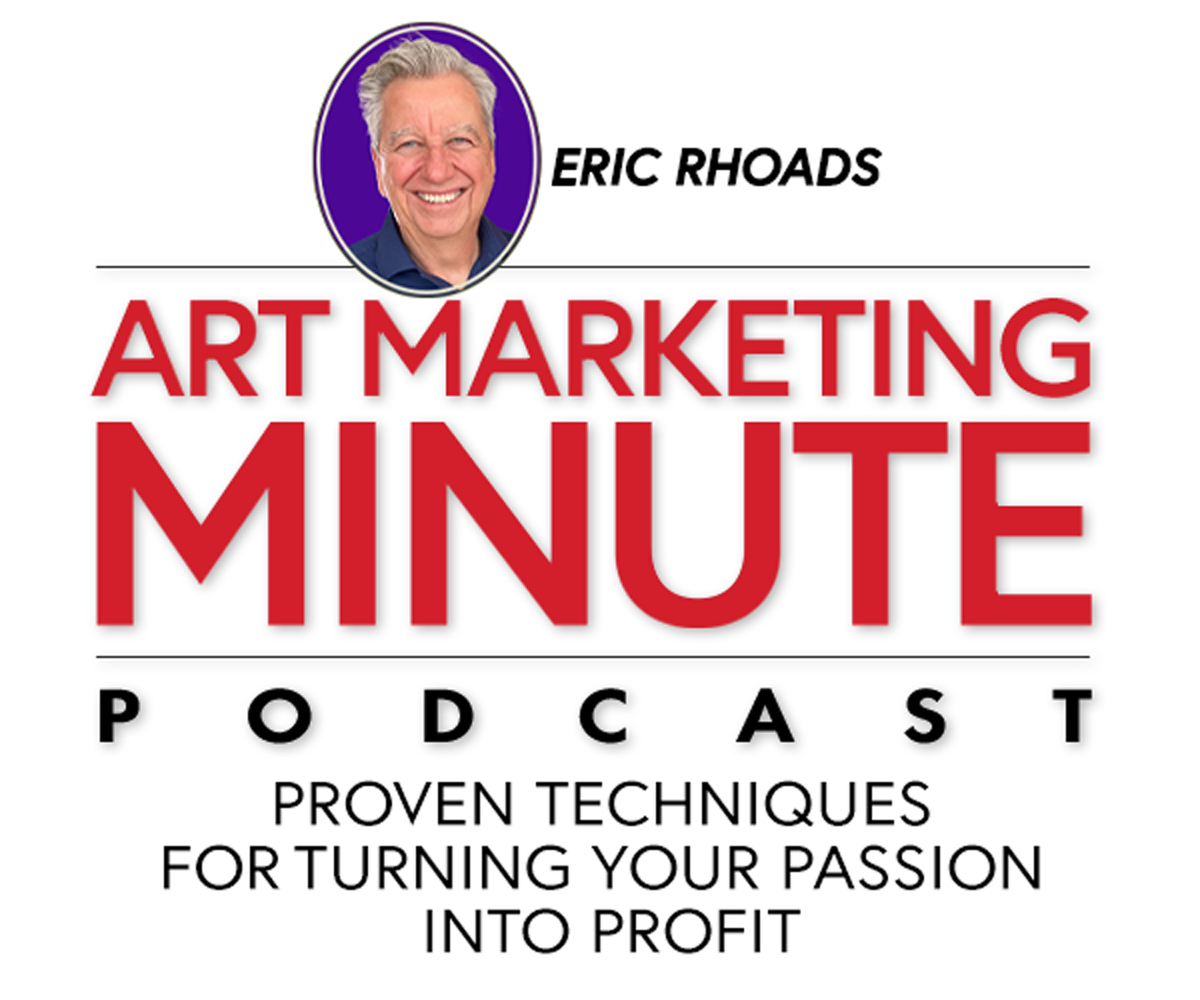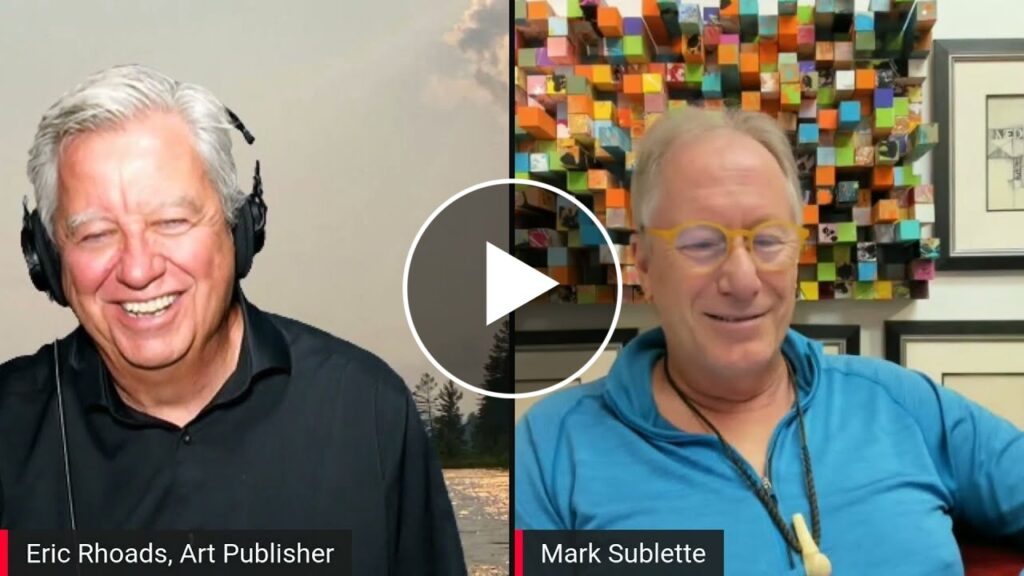Art Marketing Minute Podcast: Episode 88
How can international artists sell more art in America? Should you quit your day job to become a full-time artist? Eric Rhoads answers in this week’s Art Marketing Minute Podcast.
This episode was originally published in 2021 and is still relevant. In the Art Marketing Minute Podcast, you’ll learn how to sell your art, how to market your paintings, and everything else you need to know in order to have a successful art career. Each episode answers questions from artists by host Eric Rhoads, author of “Make More Money Selling Your Art,” publisher of several art magazines and newsletters, and author of ArtMarketing.com.
Listen to the Art Marketing Minute Podcast: Episode 88 >
Submit Your Art Marketing Question:
What questions do you have about selling your art? Email Eric today at [email protected] (include your name and where you’re from) to hear your question answered on an upcoming Art Marketing Minute Podcast.
FULL TRANSCRIPT of the Art Marketing Minute:
DISCLAIMER: The following is the output of a transcription from an audio recording of the Art Marketing Minute. Although the transcription is mostly correct, in some cases it is slightly inaccurate due to the recording and/or software transcription.
Announcer:
This is the Art Marketing Minute with Eric Rhoads, author of the Amazon best selling book, “Make More Money Selling Your Art.” In the marketing minute we answer your questions to help your art career brought to you by artmarketing.com, the place to go to learn more about marketing. Now, here’s your host, arts magazine publisher, Eric Rhoads.
Eric Rhoads:
This comes from Esther Luca from Spain. Oh, cool. I she says I think it’s harder for artists to make a living in Europe than it is in America. Can you tell me how I can make my painting sell in America? You know, I don’t have a clue. I don’t know if it’s harder. You know, I think sometimes the grass is always greener, right? We think it’s not as good in our area. But it may just be the way you’re doing things. Maybe your marketing maybe the way you’re putting yourself out there. I don’t know if it’s true or not. But it probably is, to some extent anyway. People who love and buy paintings, they’re the same everywhere, I would think so you may just have to do some marketing different. I mean, you know, I think that, you know, sometimes the economy ebbs and flows. So like if you’re in an area with a bad economy, maybe they’re not buying paintings, but you maybe got a market in an area with a good economy. That’s why in America I was talking about if you’re in a couple of galleries, make sure you’re in one gallery where the economy’s really strong or where tourism is really strong. You Roca Ester, excuse me, Esther, you can take advantage of the mystique. Being from Spain seems exotic to those of us here in America. And I would think that galleries love the idea of saying this person’s from France or Spain or something. So you might want to start thinking about marketing in America, talk to some galleries and so on so they can market you. But remember, the world is small today, you can get your work out there on Instagram and Facebook and other things, and nobody has to know where you’re from. I’m going to be teaching Instagram marketing one morning at the (2021) plein air convention and the key to Instagram marketing. And then there’s many, but there’s an 8020 rule, you know, 80% content 20% asking or selling. And so don’t overdo it. And so you just want to kind of build your reputation there. But you know, you can’t really control who’s there. You don’t know if they’re collectors or followers or just other artists, not just other artists, but other artists. So just be keeping that in mind. If you want to get into an environment where you’re pretty much guaranteed to sell then you want to be in an environment where people are there to buy. For instance, you know, a magazine like mine, fine art connoisseur, or plein air, people are there to buy people, track artists, they watch them, they watch them over time, and they eventually will they like them, they’ll eventually buy something. The key to all marketing though the principles are always the same. You’ve got to find a platform where the money is hiding, right? I always say stand in the river where the money is flowing. Something that collectors are known art buyers are going to spend time with, which tends to be, you know, like art shows, Art Gallery openings, art magazines, art websites, but more focused on art buyers, things that focus on art buyers and art collectors. So I also like to go where the big money is because big money is not as sensitive if the economy crashes, and the economy always crashes at some point. So big money might not spend a half a million dollars on a painting, they might only spend $50,000 on a painting, but small money, they just stopped buying then. So I like to be where big money is. And that’s why Fine Art connoisseurs like we focus on we’ve got like 300 billionaires that read it. So it’s pretty cool. Anyway, you want to be seen frequently, people believe that advertising is content. In other words, they see your ads of your paintings. They feel like it’s content. That’s not true at all magazine advertising, but it’s very true in an art magazine, and concentrate on dominating single out audience, right. So like, if you spread yourself too thin, you say I’ll do a little here and a little there and a little over there, then you’re not getting enough frequency typically unless you can really afford it. So get where you can get a lot of frequency where you can be there. All year, every year, every issue of multiple times over, you know, three, four or five years. That’s how you build a reputation takes time and commitment. I have artists that I helped start marketing five years ago, who are household brands today in the at least in the art communities that nobody ever heard of five years ago, it’s because they’re just out there and they’re consistent. It’s not for the faint of heart. It’s not easy, but I hope this helps.
Next question comes from Julien See, Atlanta, Georgia. Eric, he says I love listening to you when I paint. I was sitting here wondering the other day, how I can do this full time I work as a manager at a tire store. My back hurts. Yeah, I get it. I don’t, I can’t keep doing this. My goal is to be a full time artist in five years, but I don’t know where to start. And I’m in my mid 40s. So I can’t retire anytime soon. And I’ll be given up what retirement income I have. What would you do? You know, Julian, follow what you love. If you follow what you love, you’re always gonna find a way, it isn’t always easy. I’m not saying it’s gonna be easy. You know, there’s a TV host by the name of Steve Harvey. I saw a video of him the other day, and somebody asked him kind of the question, how do you succeed, and he says, you have to jump, you have to take a leap of faith, you have to jump off. He said, you’re gonna see others who have had success. You’ll see people with nice cars and big houses and big money. And maybe those things are important to you. Maybe they’re not maybe it’s just about making a living. But he said, when you see that don’t get debt, get dough. Hello, don’t get discouraged when it’s not you, Your time will come You know, they may have you don’t know what they’ve gone through to get there. He says their parachute opened, they jumped their parachute open, he said, You jump, you might fall and fall and fall and have a lot of mishaps and hit some rocks and bump your head. But you’re going to eventually make it me you don’t if you don’t jump, you’ll never make it you’re never going to get your parachute up. And if you don’t jump, so I thought that was pretty good advice. And so I think, you know, the whole idea is, I like to make plans. I don’t just jump I mean, I sometimes I make I take risks, but I don’t just jump I think you need to be a student of marketing. I would study marketing like crazy for a year, just study it by everything you can read everything you can study, study, study, study, study, start trying at marketing makes the difference. There are painters that have never been heard of that are brilliant, that will never be seen or heard of because they don’t do any marketing. There are great painters in the world from the past. You know, Monet was a great marketer. He was a brilliant marketer. So look how famous he is now, he’s dead, but he’s famous. Anyway, build yourself what I call a four or five year plan, start working to plan edge into it, the goal is to start selling while you still have your job, start selling, get good at it, ramp it up so that by the time you’re ready to quit your job, the time you’re ready to quit your job, I think is when you’ve got you’ve replaced your income. So now you’re making double the income, right? Because you’ve got your painting income, and you’ve got your job income, when you’ve got double the income. Now you can start putting a little money away, so that you have money for a rainy day, because it’s nice to have six months or a year if you possibly can put away and then you know, once you’ve got some money put away then I think it’s okay to pull the plug in. Maybe a friend of mine did this, he went from a full time job. And he went to a part time with the same company. And that he went to a consulting, reducing his time a little bit year after year. And then eventually he went out full time doing art. And he was teaching and workshops and you know, whatever it was to bring in money. And so that’s kind of the way you do it, your edge into it. So anyway, hope that helps. You know, of course you got to get good at being a painter to us. You want to be doing workshops, you want to be studying videos, you want to do anything you can to make sure that you’re constantly improving your work, because you’re out there among others who are doing the same thing you got to compete. So I hope that’s been a good answer for you. Thank you. I appreciate the question.
Well, this has been the art marketing minute with me. Eric Rhoads. My goal in life is to eliminate the idea of the starving artist to help your dreams actually come true. So if you want to submit questions, simply email [email protected]. And to learn more about marketing ideas, you can visit Artmarketing.com. Thanks for listening.
How to Submit Your Art Marketing Questions: What questions do you have about selling your art? Email Eric today at [email protected] (include your name and where you’re from) to hear your question answered on an upcoming Art Marketing Minute Podcast.
